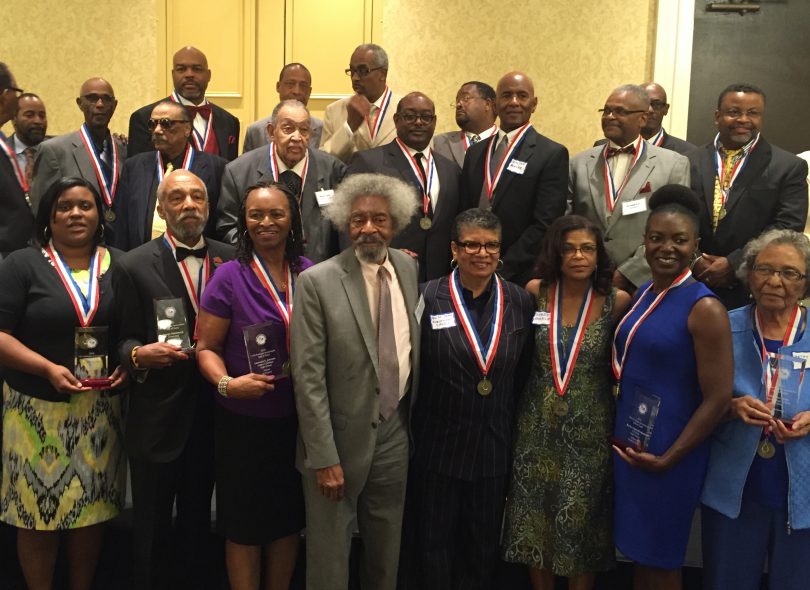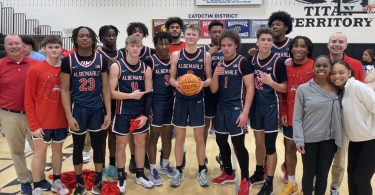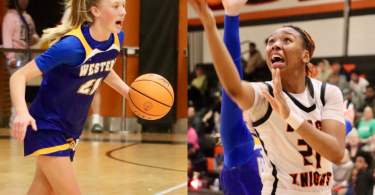It was a night that took two years to put together in terms of organization, but in the grand scheme of things, this was something that former students have clamored for over decades. The Virginia Interscholastic Association (VIA) and its predecessor, the Virginia Interscholastic Athletic League (VIAL), were the organizing bodies for the Commonwealth’s black schools during segregation. It’s an era in high school sports that stretched from 1914 until 1969 when integration began.
Without much media coverage, and a number of records being displaced over the years, so much of the glory that happened scholastically during the segregation era athletics has fallen to the wayside. Despite a lack of stats, the Virginia High School Hall of Fame, a joint operation between the Virginia High School League (founded in 1913, and which merged with the VIA in 1970) and the Virginia High School Coaches Association (founded in 1947), has been able to honor a number of former students, coaches and contributors, from this era, but not to the satisfaction of so many that played in the VIA/VIAL’s time. So something needed to be done.
As such, in March of 2014 a group of former students, coaches and media members from that era met at Virginia State University to found the Virginia Interscholastic Association Heritage Association, a non-profit organization, to shine a light on this particular era of athletics. A little over two years later at the DoubleTree in Charlottesville, a banquet was held for the first 27 inductees to the VIAHA Hall of Fame.
“The VIA was a powerful equalizer in a time of state-sanctioned inequality,” said VIAHA chairmain Jimmy Hollins. “Its impact upon thousands and thousands of young men and women presented them with a lifetime of hard earned accomplishments.”
Four former Central Virginia students and/or coaches were among the 27 inducted. They included NFL Hall of Famer Roosevelt Brown, coaches Robert Smith and Claerence Jones and band director Elmer Sampson.
Brown attended Jefferson High and graduated in 1947. He went on to Morgan State and was a 9-time Pro Bowler and a key component of the New York Giants 1956 championship team. He was inducted posthumously. He died in 2004.
Smith coached at Burley and in a 9-year run at the school, led the football team to a 73-11-2 record, including a perfect 9-0 season in 1956 where his team went unscored upon. Smith was also inducted posthumously. He died in 1997.
Jones took over for Smith at Burley. He won three VIA Western District titles for the Bears. He became a staff member at the VHSL in 1970 and was critical in helping with the VIA/VHSL merger that took place at that time.
Sampson, who graduated from Jefferson High, went on to become the band director at Burley in 1955. He served at that post for 12 years. He later became the band director at Albemarle. Sampson was also inducted posthumously. He died in 1999.
With a great deal of the first class of the VIAHA HOF being honored after their deaths, much of the focus during the ceremony was driving home the importance of remembering the names of these individuals who paved the way for the athletes that followed, both during integration and today.
“While the memories of the VIA are fading, it’s impact needs to be preserved and the memories of the VIA revitalized for future generations of students and their families.”
Giving the acceptance speech and echoing those sentiments on behalf of all 27 honorees was Walter Bowser of Huntington High School (1967) out of Newport News, Va. In 1966 he led Huntington to a VIA state championship with his play at quarterback. Bowser was recruited to play football at the University of Virginia, Virginia Tech and Richmond, but chose to play at the University of Minnesota. As a Golden Gopher, he played football, basketball and tennis. He finished at UM with a law degree and later became a State District Court Judge. Bowser was elected to the Virginia High School Hall of Fame in 2010.
All records of the VIA are now currently stored at Virginia State University. The VIAHA plans to make this an annual event, but its first class of its Hall of Fame is nothing short of impressive, and as Hollins has said many times before — long overdue.




